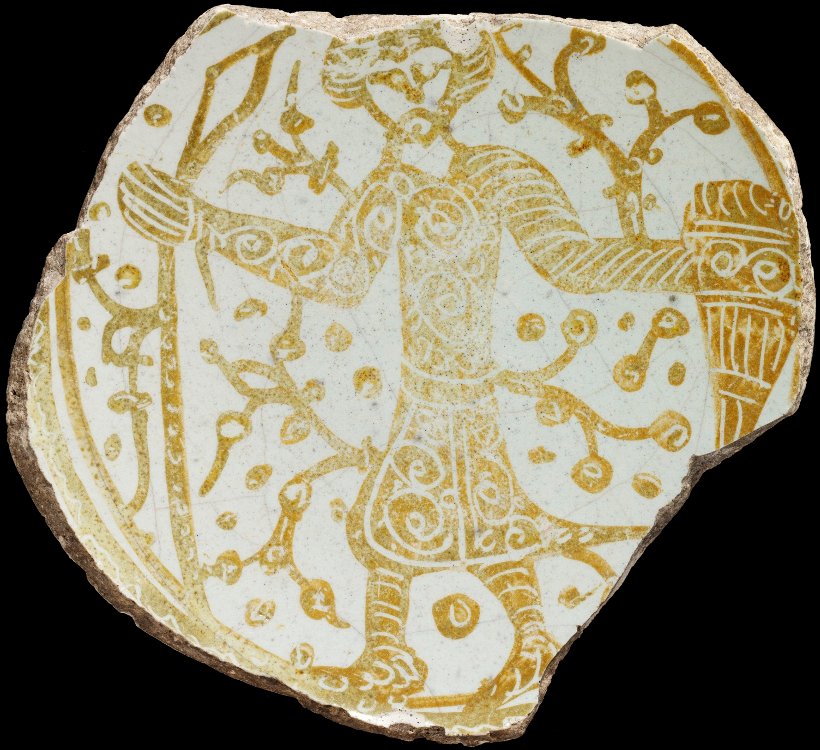Fragment of a Fatimid Plate with soldier with kite shield.
 A larger image of this fragment of a Fatimid Plate with soldier with kite shield. Victoria & Albert Museum, London. |
 A larger image of this fragment of a Fatimid Plate with soldier with kite shield. Victoria & Albert Museum, London. |
Physical description: Fragment, earthenware, from the middle of a bowl, covered in white slip, glazed and painted in yellow lustre with a coptic-style male figure holding a spear and a shield, on a foliate ground
Place of Origin: Fostat (excavated) Egypt (made)
Date: 1100-1200 (made)
Dimensions: Width: 4.5 in
Materials: Earthenware
Techniques: Lustre-painted
Categories: Ceramics Collection
Credit Line: Given by G. D. Hornblower, Esq.
Museum number: C.1805-1921
Victoria & Albert Museum, London.
Referenced on p.30, MAA - 125 - The Armies of Islam 7th-11th Centuries by David Nicolle & Angus McBride:
The kite-shaped shield is generally regarded as a European development, but may have appeared in the Middle East and Byzantium as an infantry shield before being adopted by the horsemen of the West. A small kite-shaped buckler is shown on this 10th-11th century Fatimid plate from Egypt. Many Armenian mercenaries served the Fatimids, and some of the earliest representations of such shields are found in or near Armenia.
Referenced on p.50, EH - 001 - Essential Histories. The Crusades. by David Nicolle:
Ceramic fragment showing a Fatimid Egyptian infantryman, Egypt 11th-12th centuries. This damaged fragment of lustreware ceramic provides one of the most interesting existing illustrations of an Islamic Middle Eastern foot soldier from the early Crusader period. As in other sources, he protects his head with a bulky turban, is armed with a broad-bladed spear and a kite-shaped shield. His left arm and shoulder are given a different pattern to the rest of his costume, perhaps suggesting that a mail hauberk is worn beneath a fabric outer garment.
Referenced on p.8, MAA - 320 Armies of the Caliphates 862-1098 by David Nicolle:
A fragment of lustre ceramic from 10th-11th century Egypt provides one of the clearest illustrations of an infantry or naval soldier.
Referenced as figure 149 in The military technology of classical Islam by D Nicolle
149. Ceramic fragment, 10th-11th centuries AD, Fāṭimid, Victoria and Albert Museum, London